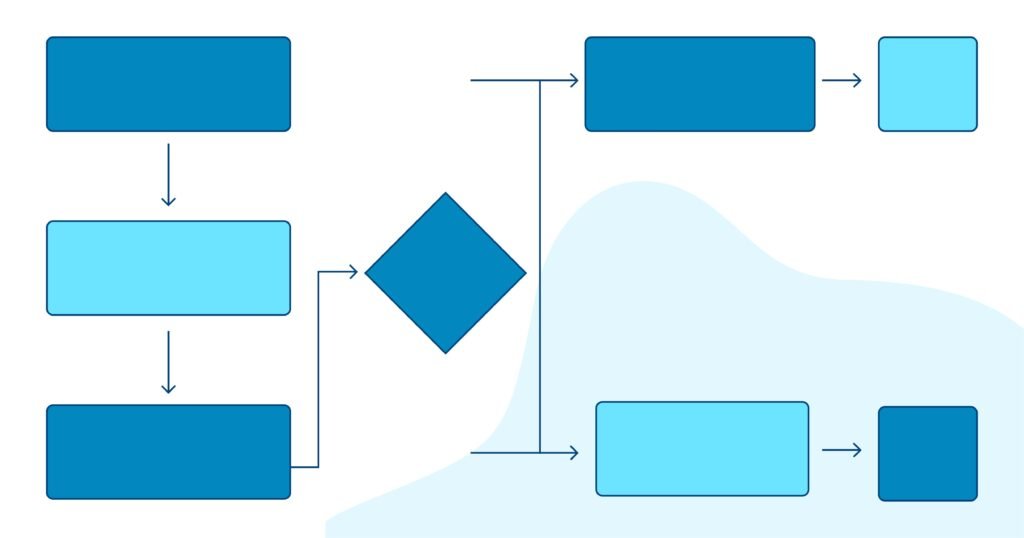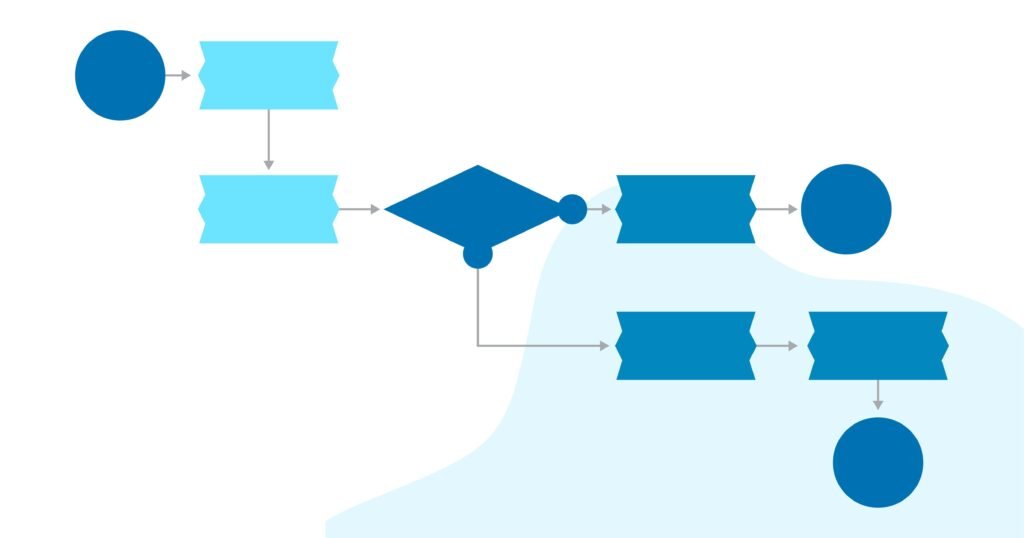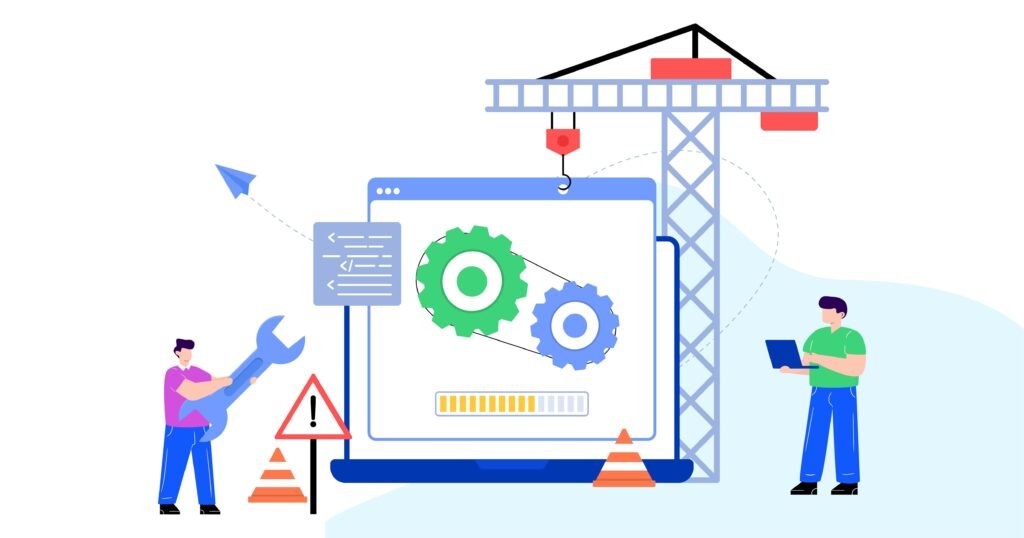5 Business Process Analysis Techniques to Know

A business process analysis in every organization helps review your business operations processes. It usually includes five steps- reviewing processes, collecting data, analyzing processes, identifying opportunities for improvement, and making changes.
Every company runs with several business processes that happen daily. The coordination and execution of these processes will help your business’s smooth flow. But how will you know whether the business processes are ideal or not? We are not asking you to chase perfection in your business processes. Still, your business processes must qualify the measure of near perfection for the smooth functioning of your organization.
Hence, Business Process Analysis plays a crucial role in this aspect. It helps in reviewing your processes, assessing the pros and cons of your business process, etc. It can also help find out several bottlenecks in your business process and different remedies for the same.
Here are some fantastic Business Process Analysis techniques that will help improve your business processes.
Technique 1: Process Mapping

Process Mapping is a crucial extension of Business Process Analysis, a different part of Business Process Management. It visually depicts the company’s processes through charts, flowcharts, diagrams and symbols. The visual representation of the workflows and systems in a company is laid out for the stakeholders to understand and adhere to the optimum functioning.
The mapping includes end-to-end sequencing of each step in a particular business process. It also sets the interrelation between different approaches to reduce the complexity. Process Mapping is a method of decomposing a complex process into a simple form via flow charts or diagrams.
Process Mapping is a one-stop solution for enhancing your business processes and improving their productivity, efficiency, and effectiveness.
Benefits of Process Mapping
There are several benefits of Process Mapping for Business Process Analysis; they are:
- It provides immense clarity to every individual working in the company.
- It enhances decision-making for the company through proper analysis and assessment.
- It is beneficial when incorporated initially in the business, as it reduces extra burden while upscaling your company.
- It reduces mental pressure and fatigue for the employees.
- It helps you choose a better investment portfolio for your company.
- It increases the visibility of business processes.
- It provides uniform training to new recruitments.
- It eliminates redundancies.
- It establishes operational norms and systematic control over how a process functions.
Steps to Conduct Process Mapping
Process Mapping for Business Process Analysis has many elaborate steps that help in full-fledged mapping of the business processes in your organization. These steps are:
- Identifying the process to be analyzed
The primary step is to identify the business process Analysis you need to analyze. If you’re thinking of studying all the techniques together, then you will fall in the middle of the ocean and sink. So, picking a business process and analyzing it singularly is ideal.
- Documenting the process flow.
The next step in Process Mapping is to document the steps of your business process appropriately. You may need relevant data and supporting documents for this step. Ultimately, documentation will provide visibility and clarity to the business process, which is the final scope of mapping.
- Analyzing and identifying improvement opportunities.
The most important step comes now, Analyzing and Identifying the scope of improvement in your business processes. You can use tools or involve relevant stakeholders to analyze and assess your techniques to find any inefficiencies, bottlenecks, and redundancies in them. Also, you can understand further improvements you can make in your business processes Analysis to make your workflow more productive and efficient.
- Creating a revised process map.
The final step includes implementing all your assessments and analyzing the previous steps to create a revised process map that checks the boxes of efficiency, effectiveness, productivity, visibility, clarity, and accessibility
Technique 2: Value Stream Mapping
Value stream mapping is a flowchart that helps decode your organization’s business process by analyzing it. It is a beneficial component in lean project management, like an Agile methodology, as it increases customer value by eliminating redundancies from each business process.
Value stream mapping involves mapping business processes, identifying and eliminating process redundancies, improvisations mapping, and implementing different business processes. Through value stream mapping, you can have considerable scope for improvement in your business process flows, lead and processing times, equipment reliability, and raw materials/inventory. Value Stream Mapping can help tackle redundancies, like overproduction, mismanagement, or project defects, for a smooth business process flow.
You may aslso like: How To Identify When It’s Right Time To Perform Business Risk Assessments?
Benefits of Value Stream Mapping

Through value stream mapping, you can significantly improve your business processes. Here are some benefits of value stream mapping in Business Process Analysis.
- It helps to improve an end-to-end work process
- It helps in identifying inventory pile-ups in a process
- It also enables you to find opportunities for process optimization
- It enables you to learn the inherent complexities of a process
- It allows you to understand the IT systems used in a process
- It helps assess the effectiveness of customer service channels
- It helps to display the health of your processes visually
- It helps in strategically reviewing your procedures.
Value Stream Mapping is beneficial in all the above processes in your business. However, they have limitations as they are not valuable in business processes that have no relation to information, product, or time flow.
Steps to Conduct Value Stream Mapping
Here are the steps that help in conducting the most popular process mapping technique Value Stream Mapping, for process analysis:
- Identifying the value stream to be analyzed
You must diligently understand and identify the right business processes analysis that can benefit through value stream mapping. Also, it would be best to look for business processes that have problems related to information, product, or time flow, as Value stream mapping may not come in handy beyond these limitations.
2. Mapping the current state value stream
Suppose you want to identify the bottlenecks in your business processes. In that case, you must map the current operations, as it gives massive visibility and clarity. When you map the existing methods, identifying loopholes becomes extremely easy, and you can also find practical solutions.
3. Analyzing and identifying waste
It is the most crucial step in the entire value stream mapping. The main idea of this technique is to identify inefficiencies, bottlenecks, loopholes, and redundancies in your business processes to make them more visible, clear, and accessible to the masses. So, analyzing and identifying the waste in your business processes is highly useful.
4. Designing the future state value stream
After you identify and analyze the bottlenecks in the current business processes, it’s time to make amends. It would be best to strategize different ways to eliminate these redundancies and design a new value stream map for the improvised version of your business processes. The final design of your value stream map will be free from any loopholes or waste, and you can significantly enhance your workflow’s functioning.
You may also like: Why Is Process Mapping One Of The Five Steps In Business Process Improvement bpi?
Technique 3: SWOT Analysis
The full form of SWOT is Strengths, Weaknesses, Opportunities, and Threats. It is a technique that helps assess these four aspects of your business process.
SWOT Analysis is a tool that will help you analyze your company’s present business processes analysis and also help in devising a successful strategy for the future. You can also decide some areas of the business processes holding you back until now. You can exploit all the benefits in your business process analysis and create healthy competition in the industry.
In this type of process analysis, you can examine internal and external factors that govern process flow in your organization. You must understand that both aspects cannot be in your control. So, you can choose to react according to the type of factor you will discover.
SWOT Analysis challenges your risky assumptions and shows the blindspots in your business processes. You can discover several new insights through SWOT analysis and improvise them accordingly.
Benefits of SWOT Analysis in Business Process Analysis
The following are the benefits of SWOT analysis in Process Analysis:
- Improved Self-Awareness
SWOT analysis will help you understand your organization and its processes better. Hence, you become self-aware and work accordingly to improvise your processes.
- Identification of Opportunities
You can get a clear picture of the opportunities in your business processes where you can improvise.
- Threat Mitigation
When you know the threats well, you will find ways to mitigate them. Through SWOT analysis, you will be able to identify the dangers in your business and mitigate them.
- Strategic Planning and Decision-Making.
With a proper SWOT analysis, you can initiate strategic planning and decision-making for further improvisations in your business processes.
- Resource Optimization.
When you know the strength and weaknesses of your business processes, you can easily optimize your resources for maximum benefits. It will also help in cost-cutting.
- Improved Communication and Collaboration
The confidence that comes with knowing yourself well is magical. With SWOT analysis, you’re going to experience the same. It will help in improving your communication and doing successful collaborations.
- Competitive Advantage
Through SWOT analysis, you will discover beautiful insights about your business, which will give you an advantage over your competitors.
- Performance Measurement and Tracking
You can easily track your company’s performance and measure growth across various parameters.
- Employee Engagement
SWOT analysis can help in employee engagement as they contribute maximum to any company.
- Risk Management
You can easily manage risks by doing a SWOT analysis. As it gives you a clear picture of your organization, you can manage the risks via threats or weaknesses.
- Innovation and Growth
When you know your strengths, weaknesses, threats, and opportunities, you have a huge scope for improvement through growth and innovation.
- Informed Decision-Making for Mergers and Acquisitions
Decisions play a crucial role in any business. SWOT analysis lets you learn about your company better, ensuring informed decision-making during important mergers and acquisitions.
You may also like: Top 10 Business Process Mapping Tools For Increasing Business Efficiency.
Steps to Conduct SWOT Analysis
Here are some of the steps that you must follow to conduct a SWOT analysis of your business:
- Identifying strengths and weaknesses
The first two letters in SWOT stand for Strengths and Weaknesses. So, the first step includes identifying your strengths and weaknesses to understand your business processes better and provide scope for improvement.
- Identifying opportunities and threats.
The next two letters in SWOT stand for Opportunities and Threats. So, the next step includes identifying possible opportunities and threats in your business processes. It will help in mitigating risks and managing them smoothly.
- Analyzing and prioritizing key findings.
After analyzing and assessing the above findings, making amends and implementing those improvisations is crucial. You can improvise through tools or technology. It will enhance the efficiency and productivity of your business processes significantly.
Technique 4: Root Cause Analysis
Suppose you’re on a weight loss journey; what will be the first thing that you’ll do? Most people will say diet and exercise. Yes, that’s true; but first, you must analyze your current lifestyle and why you gained so much weight. Further, after examining and assessing in detail, you will chalk a diet plan and exercise routine for your weight loss journey. For some people, weight gain could be because of a sedentary lifestyle; for others, it can be because of junk food consumption, or it can be due to an underlying disease.
In the above example, if you change the diet plan for a sedentary person, they may not lose weight; the right remedy is to put him through exercise. Hence, Root Cause Analysis of a problem or business process is crucial to determine the actual cause of the issue and find a remedy accordingly.
Yu may also like: What are the benefits of providing BPM training to your employees?
Benefits of Root Cause Analysis in Business Process Analysis

Here are some of the benefits of Root Cause Analysis in Business Process Analysis:
- The main benefit is that it helps to identify the root cause of a problem in your business processes.
- It helps to understand how one process can cause a chain of problems
- It also helps to determine the relationship between different root causes
- It is a highly effective technique without any detailed evaluation.
- It can easily solve mild to extreme kinds of problems without any limitations.
- It is very helpful in solving manual errors.
There are many types of Root Cause analysis techniques, and you can use them singularly or in combination to analyze your business processes. Ultimately, it improves your business processes and makes them more efficient and effective for smooth workflows in your organization.
Steps to Conduct Root Cause Analysis
Here are some of the important steps that can help you conduct root cause analysis:
- Identifying the problem or issue
The first and foremost step is to identify the issue in your business processes. Every business process may have some loopholes or bottlenecks. Still, the major task is to identify them to find the root cause and make corrections accordingly. Hence, it is one of the most crucial steps in root cause analysis.
- Collecting data and evidence
After you identify the problems in your business processes, it is time to collect relevant data or evidence to ensure it is a serious issue which requires corrections. Identifying a particular segment in your workflow may be a problem. Still, in reality, it is not an issue. Hence, it is ideal for communicating with stakeholders and other employees and collecting data and evidence proving them as issues requiring improvisation.
- Analyzing data to identify potential causes
Root cause analysis requires you to analyze the above data you gathered and determine the real cause of such issues in your business processes. It is a very crucial step as it shows you the path to improvement and necessary amendments that can be necessary in the future.
- Determining the root cause
After analysis of the data and evidence, you must determine the exact cause of the problem. If your weight gain is because of junk food after thorough research, then the remedy would be to cut out junk from your diet and follow clean eating. Hence, determining the root cause will also give you a solution to your problems.
You may also like: How to choose the right Business Process Consultant for your Business?
Technique 5: Business Process Re-engineering
Business Process Re-engineering is a process analysis that includes assessing and analyzing your business processes to improve them via redesigning your operations’ quality, output, cost, service, and speed.
The ultimate aim of business process re-engineering is to improve the efficiency of business processes by eliminating any inefficiencies or loopholes in your current processes. It has several benefits, as it directly improves the processes in your business, and it will also enhance your company’s productivity.
Benefits of Business Process Re-engineering
There are several benefits of Business Process Re-engineering in Process Analysis; they are:
- It educates and empowers your employees.
- It brings about business growth.
- It organizes the business structure.
- It improves the scalability of your business.
- It enhances the transparency in your business processes.
- It helps eliminate all redundancies or unwanted steps from your business processes.
- It reduces manufacturing and operational costs.
- It improves the quality of business processes.
- It helps in integrating the organization.
Steps to Conduct Business Process Re-engineering

Here are the steps to conduct Business Process Re-engineering for process analysis:
- Identifying the processes to be re-engineered
If you think all business processes need re-engineering, my friend, you’re wrong. Every company runs several business processes, not all requiring re-engineering. The challenge is identifying those business processes with bottlenecks, redundancies, or repetitive tasks that can be re-engineered via technology, automation, or other improvement possibilities.
- Analyzing and redesigning the processes
Your next step is to analyze those processes by mapping them or through different tools. It’s time for you to thoroughly inspect the business processes and discover the process gaps and errors in them, as these stop the business from growing. Your analysis must be elaborated to find out all the loopholes for a scope of improvement.
After a clear analysis, you must redesign these processes by eliminating the loopholes and implementing necessary changes. The process gaps are of different types in multiple segments of your business. So, it would be best if you worked on various scopes of improvements for numerous process gaps. Process Re-engineering involves improvising business processes to appropriate strategizing.
3. Implementing the redesigned processes
Once you are ready with your re-engineered business process maps, it’s time to implement them. Everyone in your organization must know about the changes in business processes before implementing them, including the stakeholders.
It is always ideal to proceed with implementation only after everyone in the organization understands the new processes. Once you implement new business processes, you will soon start seeing positive changes in your business workflow.
4. Monitoring and evaluating the results
The only way you can know whether your re-engineered business processes are working well, in reality, is by continuously monitoring them and evaluating the results. There is no fixed time frame for monitoring and evaluation; it must be a part of your daily business schedule. If you identify any other bottleneck, you can always update or re-engineer them again for maximum benefits. It is all a trial-and-error game in which you can only win if you’re consistent.
You may also like: A Beginner’s Guide To BPM Training.
Conclusion
Business Process Analysis is one of the most crucial ways to improve the workflows in your business. Some BPA techniques, like SWOT analysis, BPR, Process Mapping, etc., are highly beneficial for improvising business processes before implementation. Also, these analysis techniques will help achieve maximum efficiency and visibility in your business processes. It is extremely challenging to run a business; hence it is essential to adopt practices or tools that can make your work easy without compromising on the quality of your task. Business Process Analysis is a boon to your company, so wait no more to incorporate it at the earliest.




